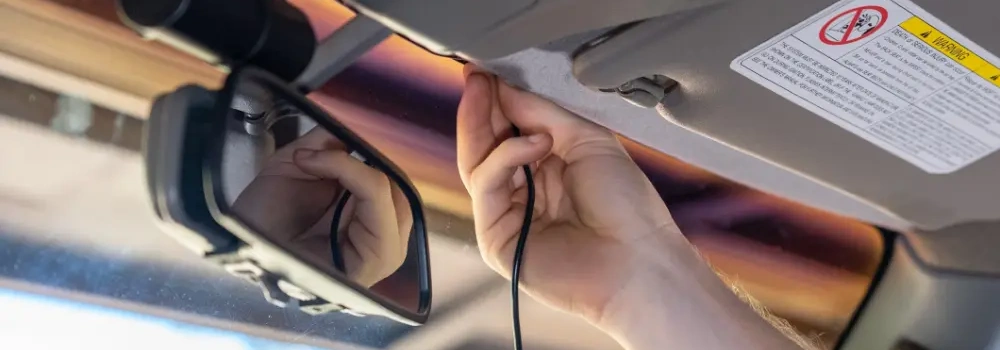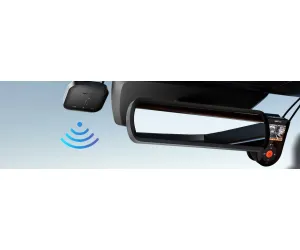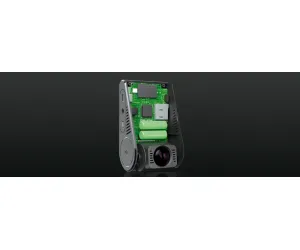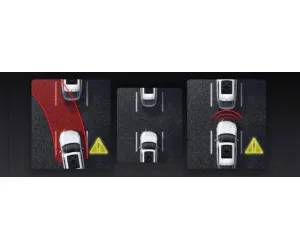
Dash cams are becoming a vital addition for modern drivers. From recording road events to enhancing parked vehicle security, a dash cam can be your silent witness—helping prevent disputes, theft, or insurance fraud. However, to get the most out of your device, choosing the right camera and installing it properly is essential.
This guide walks you through key points to consider when installing a dash cam, including installation types, must-have features, and service options available.
Why Install a Dash Cam?
-
Record road incidents with video evidence
-
Monitor your vehicle while parked
-
Prevent false insurance claims
-
Deter theft and vandalism
-
Improve driving accountability in fleets or family use
Installation Methods: Plug-and-Play vs. Hardwiring
Plug-and-Play
-
Connects via the vehicle’s 12V socket
-
Simple and fast setup
-
Suitable for temporary use or basic features
-
No support for parking mode
Hardwired Installation
-
Connects directly to the vehicle’s fuse box
-
Enables parking mode (records while the engine is off)
-
Cleaner wiring, hidden cables
-
Requires professional installation but offers long-term reliability
Note: Many users choose professional installation through specialized service providers such as Bsta.sa’s installation service, which offers on-site setup, voltage protection, and parking mode configuration.
Top Features to Look For in a Dash Cam
-
Video Resolution – Full HD or 4K for clear license plate capture
-
Night Vision – STARVIS or STARVIS 2 sensors for low-light recording
-
GPS Logging – Records speed and route details
-
Parking Mode – Detects motion or impact while parked
-
Loop Recording – Automatically overwrites old footage
-
App Connectivity – Easily access footage via smartphone
Recommended Dash Cams
Here are some reliable models that combine performance and value, available at Bsta.sa:
-
VIOFO A229 Pro 3CH – Triple-channel with HDR and STARVIS 2
-
VIOFO A329S 2CH / 3CH – 4K front camera, reliable parking mode
-
Vantrue S1 Pro – Dual-channel, GPS logging, LTE-ready
These models support advanced features such as motion detection, GPS tracking, and smartphone control.
What Does Installation Typically Cost?
-
Basic DIY Setup – Free with purchase (limited features)
-
Professional Hardwiring – Starts at SR 150 per vehicle
-
Fleet or multi-vehicle installs – Custom pricing available
For more details or to request service, visit the Bsta.sa Vehicle Electrical Services page.
How to Install a Dash Cam
Installation to the Lighter Socket (Plug-and-Play)
-
Unbox the Dash Cam – Ensure all components are included, especially the power cable.
-
Locate Your Car’s Lighter Socket – This is typically a 12V socket located near the gear shift or dashboard.
-
Connect the Dash Cam Power Cable – Plug the power cable into the lighter socket.
-
Route the Cable – Hide the cable along the edges of your car’s windshield for a clean look, ensuring that it doesn’t obstruct your view or interfere with airbag deployment.
-
Mount the Dash Cam – Use the provided adhesive mount to secure the dash cam on the windshield behind the rearview mirror for optimal video recording.
-
Test the Installation – Start your car to ensure that the dash cam powers up automatically. Adjust the camera angle if needed.
Note: This installation method is fast but limited to basic features like recording while driving. It does not support parking mode (recording while the car is off).
Installation to the Fuse Box (Hardwiring)
-
Prepare Your Tools – You’ll need a fuse tap kit, wire stripper, and crimping tool.
-
Access Your Fuse Box – This is usually located under the dashboard or near the driver’s seat. Consult your vehicle’s manual for precise location.
-
Choose a Fuse Slot – Select a fuse slot that is powered when the vehicle is on (ignition). This will enable the dash cam to turn on and off with the car.
-
Install the Fuse Tap – Attach the fuse tap to the chosen fuse slot. One end will connect to the dash cam’s power cable, and the other to the fuse box.
-
Connect the Power Cable – Run the power cable from the fuse box to the dash cam location.
-
Route and Secure the Cable – Hide the cable along the edges of the dashboard, securing it with clips or tape to avoid any interference with vehicle controls.
-
Mount the Dash Cam – Secure the dash cam using the adhesive mount behind the rearview mirror.
-
Test the Dash Cam – Turn on your car and check if the dash cam powers up and starts recording. Make sure parking mode is enabled if needed.
Note: Hardwiring provides a cleaner installation, supports parking mode, and doesn’t obstruct the lighter socket.
FAQs
-
Do I need professional installation?
Not always — but it’s highly recommended if you want to enable parking mode or ensure hidden, clean wiring. -
Will the camera drain my battery?
No, if installed with a proper voltage cutoff device. -
Can I install it myself?
Yes, especially for plug-in models. Hardwiring is best handled by a technician. -
Will the dash cam record while parked?
Yes, with parking mode activated through hardwiring. -
Does installation damage my car?
No. A professional installer will use safe, non-invasive methods. -
Can I view footage from my phone?
Yes. Most modern dash cams offer app support for Android and iOS. -
Where can I buy a compatible dash cam and get installation?
You can purchase compatible models and request installation directly from Bsta.sa.
Conclusion
Installing a dash cam is a practical step toward better road safety and vehicle protection. Whether you’re focused on daily commuting, business fleet monitoring, or parked vehicle security, the right setup makes all the difference.
Choose a dash cam with the features you need, and consider professional installation—especially if you want to enable parking mode or ensure a clean, reliable connection.
For those seeking convenience, platforms like Bsta.sa offer both premium dash cam models and certified installation services across major cities.







